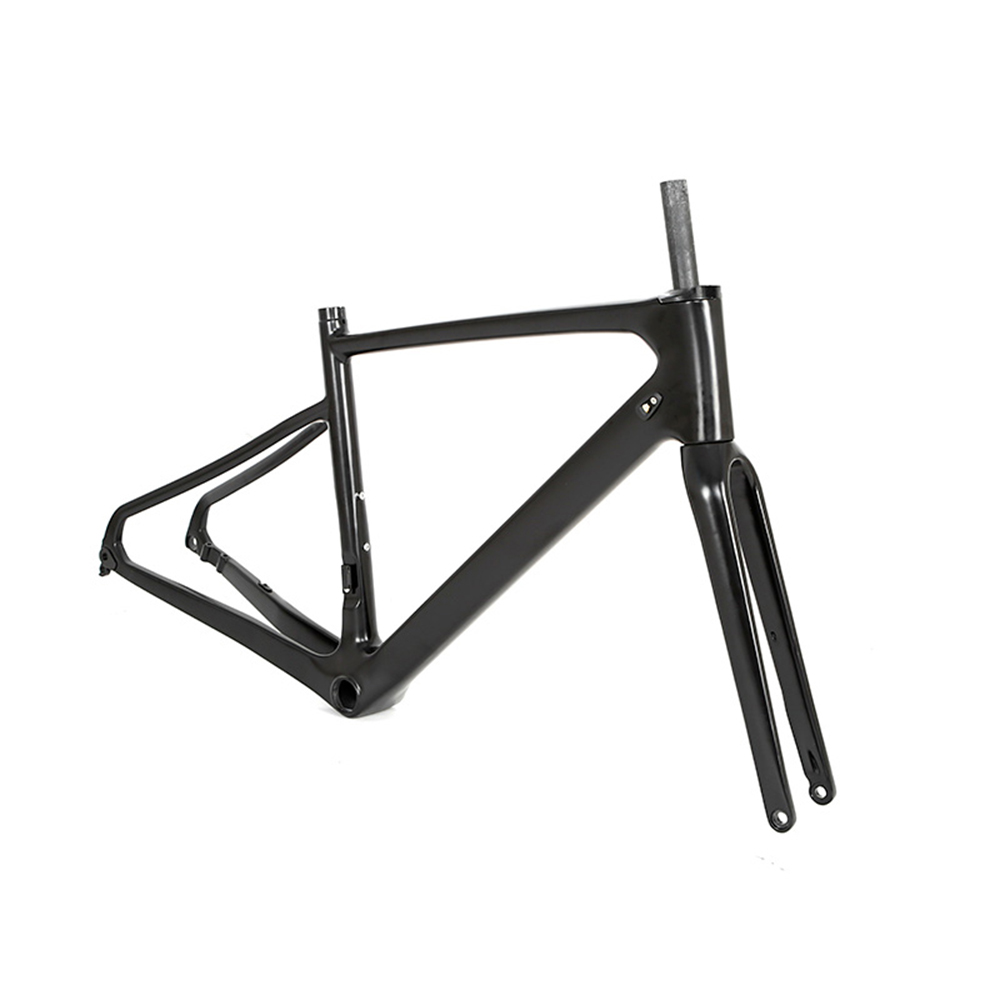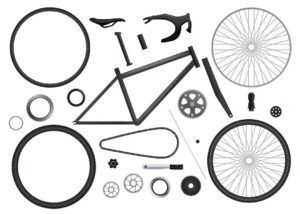Wondering what size bike frame for height is crucial for an enjoyable riding experience. The right bike frame size is more than just a matter of comfort—it’s essential for the safety, performance, and overall enjoyment of your cycling experience. A properly sized bike frame ensures proper leg extension, comfortable reach to the handlebars, and optimal handling characteristics. In this comprehensive guide, we’ll delve into the intricacies of bike frame sizing, providing you with a clear understanding of how to choose the perfect fit for your height and riding style.

Bike Frame Size Explained

Bike frame sizes typically range from extra small to extra large, with measurements based on various factors such as seat tube length, top tube length, and standover height. Understanding these measurements is key to finding the right size for your body.
How Many Inches Is a Large Bike Frame?
Large bike frames typically range from 19 to 21 inches, depending on the manufacturer and the specific model. However, it’s essential to note that frame sizes can vary between brands, so it’s crucial to consult the manufacturer’s sizing chart for accurate measurements.
How Many Inches Is a Medium Bike Frame?
Medium bike frames generally range from 17 to 19 inches in size. Again, these measurements can vary slightly depending on the brand and model of the bike.
How Many Inches Is a Small Bike Frame?
Small bike frames typically range from 15 to 17 inches, making them suitable for riders with shorter inseams or those who prefer a more compact frame.
What Size Bike Do I Need for My Height? Chart Explained
The right bike frame size is not just about comfort; it’s about optimizing your performance and ensuring a smooth ride every time you hit the road or trail. Therefore, most bike frame manufacturers provide sizing charts that correlate frame size with rider height, making it easier to find the perfect fit. Here is a chart about the rider height and suggested bike frame size according to the market research.
| Rider Height (feet/inches) | Recommended Bike Frame Size (inches) |
| 4’10” – 5’2″ | 13″ – 15″ |
| 5’3″ – 5’6″ | 15″ – 17″ |
| 5’7″ – 5’10” | 17″ – 19″ |
| 5’11” – 6’2″ | 19″ – 21″ |
| 6’3″ and above | 21″ and above |
What Size Frame Do I Need if I’m In-Between Sizes?
When you find yourself in that tricky in-between zone of bike frame sizes, fret not! There are a few strategies to consider.
Firstly, test your “reach”. Reach, the length the bike feels when you’re in riding position, depends on your upper body length, aka your trunk length. Opt for the larger size if your trunk length is longer than average. Conversely, if it’s shorter, go for the smaller size. This personalized approach ensures your bike feels like an extension of you, not a puzzle to solve.
Then, think about your riding style and preferences. If you lean towards agility and maneuverability, sizing down might be the way to go. Alternatively, if stability and comfort are your top priorities, sizing up could be the answer.
Experiment with saddle and handlebar adjustments to fine-tune your fit, and don’t hesitate to seek advice from bike experts for personalized guidance.
How Are Bike Frame Size Measured?
Bike frame sizes are typically measured from the center of the bottom bracket to the top of the seat tube. This measurement, known as the seat tube length, is the primary indicator of frame size.
To measure it accurately, you’ll need a measuring tape. Start from the center of the bottom bracket—the cylindrical component that connects the crankset—and extend the tape vertically to the top of the seat tube, where the seat post enters the frame. This measurement, usually expressed in inches or centimeters, determines the frame size and helps you find the perfect fit for your riding needs.
How to Get the Right Bike Size?
When it comes to which bike frame size is right for your customer, it involves more than just looking at measurements. The perfect bike size requires considering various factors, tailored to your customers’ needs. Let’s explore how to make the right choice:
Consider Frame Size
Refer to sizing charts or consult with experts to match your customers’ height to the appropriate frame size. For instance, more experienced riders might opt for a larger frame, capitalizing on increased stability during high-speed descents. However, a new rider may find a larger frame overwhelming, impacting their control and confidence on the bike. To meet the different needs of various customers, TP-140009, a premium carbon bike frame designed by SHINE SOON, boasts 3 frame size options, including 15″, 17″, and 19″. Whether your customers are novices or veterans, this frame has covered a lot.
Consider Frame Geometry
Frame geometry significantly influences how a bike feels and performs. Test riding different models allows your customers to experience firsthand how frame geometry aligns with your body and riding style. For example, a larger frame with a longer wheelbase and roomier cockpit offers a stable feel suited for aggressive riding positions. On the other hand, a smaller frame may provide nimble handling and a more relaxed riding posture, ideal for casual cyclists.
Consider Skill Level
Your customers’ skill level is also crucial in selecting the right bike size. Skilled riders may gravitate towards larger frames, benefiting from enhanced stability at high speeds. However, less experienced cyclists might find larger frames challenging to maneuver and control, leading to discomfort and potential safety concerns.
Consider Riding Style
Tailor your bike size to match your preferred riding style. A larger frame with ample clearance and stability may be ideal if you enjoy tackling technical trails with aggressive maneuvers. Conversely, if you prefer cruising along leisurely paths with occasional bursts of speed, a smaller frame offering responsive handling might be more suitable.
Consider Wheel Size
While most bikes feature standard wheel sizes, some brands may equip smaller frames with proportionally smaller wheels. Larger 29” wheels provide excellent rolling momentum and stability for most adults. However, smaller riders may find them cumbersome to maneuver, opting for smaller wheel sizes for improved control and agility.
Conclusion
The basics of what size bike frame for height is the foundation to ride with confidence. By understanding how to match your height to the appropriate frame size, and considering factors like frame size and geometry, riding style, and skill level, you can help your customers ensure a perfect fit. Take the time to explore options, consult with experts, and prioritize the comfort and performance on the road or trail.

















